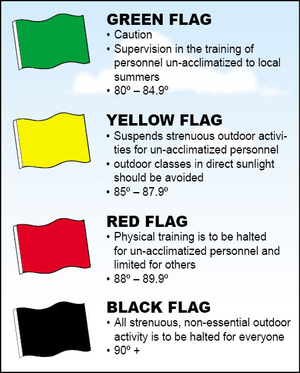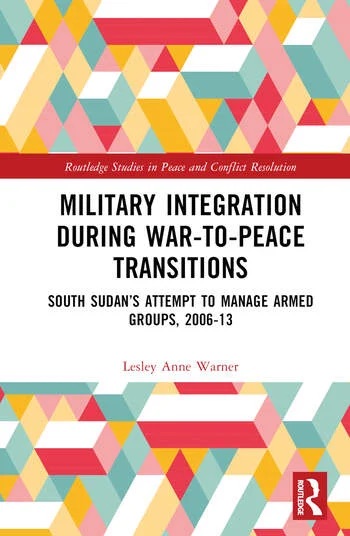New book: Military Integration during War-to-Peace Transitions (Routledge, 2023)
I’m excited to announce that my dissertation has been published as Military Integration during War-to-Peace Transitions: South Sudan’s Attempt to Manage Armed Groups, 2006-13!
In the 1960s, only 10% of peace agreements included some element of political-military accommodation – namely, military integration. From Burundi to Bosnia to Zimbabwe, that number had increased to over 50% by the 2000s. However, relatively little is understood about this dimension of power-sharing often utilized during war-to-peace transitions. Beyond the deep dive into a case of what not to do during war-to-peace transitions, this book provides several contributions to the theoretical and empirical body of literature on how to manage spoilers during fragile transitions – especially during concurrent disarmament, demobilization, and reintegration (DDR) and security sector reform (SSR) processes:
- During such transitions, governments can fight armed groups, ignore them and accept that they lack a monopoly on the use of force within the country, or seek political-military accommodation with them through military integration. In some cases, integration can be the ‘least bad’ option.
- The combination of an open-ended integration process and failed demobilization initiatives can increase pressure on the military integration process.
- A disconnect between the military integration process and broader defense sector reform efforts can contribute to the security sector being rebuilt on an unstable foundation.
- A de facto open-ended military integration process can make it more difficult for a military to focus on cohesion and professionalization, which risks making the force prone to fracturing during periods of heightened political competition.
- Military power-sharing arrangements cannot overcome failed political accommodation efforts, and can even become more vulnerable as political power-sharing arrangements erode.
- Although integration may help warring parties temporarily overcome wartime factionalism and avert conflict in the short term, the process can even contribute to instability if the process is not well-implemented as a transitional security mechanism.
The conclusions I reached were based on interviews conducted in South Sudan, Ethiopia, and Kenya between 2012 and 2014 with individuals who directly managed or facilitated South Sudan’s integration, DDR, and SSR processes between 2006 and 2013.
If you want to grab a copy, use the code AFL02 to receive 20% off until September 30, 2023!
“There may have been some *light* terrorism…”
On my About Me page, I alluded to the possibility of writing about my experience traveling in Africa – to add an entertaining counterweight to my more analytical rants and musings on the events unfolding on the continent. The following is about several discussions I recently had while planning for a trip:
People who know me well know that I love me some Arrested Development. In Arrested Development, one of the running jokes is that George Bluth (pictured below) may have committed some ‘light’ treason for illegally building homes in Iraq under Saddam Hussein. This recurring joke is humorous not only because of the way the character says it, but also because light treason doesn’t exist in the American legal system.

Fast forwarding to the present day – In my planning for an upcoming trip, I found myself arguing that the places I was going were reasonably safe because they only had some *light* terrorism. It’s a ridiculous concept because there’s no such thing as ‘light terrorism’, so yes, I do see the flaws in my logic.
The Disintegration of the Military Integration Process in South Sudan (2006–2013)
Originally published by Stability: International Journal of Security and Development on September 27, 2016)
Abstract: This article argues that military integration served a critical purpose in 2006, arguably preventing large-scale conflict within South Sudan and ensuring a level of stability prior to the CPA-mandated referendum on self-determination in 2011. Nonetheless, integration was poorly-conceived and implemented, and received limited support from third party actors that were more focused on rightsizing the SPLA and transforming it into a conventional, professional military. The de facto open-door nature of South Sudan’s integration process created incentives for armed rebellion, while failed rightsizing initiatives increased pressure on the military integration process as the most expedient way of mitigating the threat these groups posed to stability. Integration thus became an end in and of itself rather than a transitional measure to contain former combatants while the government worked out a more long-term solution for South Sudan’s security sector. Consequently, the SPLA was in a state of arrested development, preventing efforts to transform the military from gaining traction, and making the force more likely to fragment along factional lines during periods of heightened political competition.
(Read the rest here.)
South Sudan at Five – Recommended Readings
Today is the 5th anniversary of South Sudan’s independence. As the country is recovering from a devastating civil war and continues to suffer from rampant inflation, the government had previously announced that it would cancel independence celebrations. Instead, the two days preceding the holiday, South Sudan instead marked the occasion by having government and opposition forces exchange fire in separate incidents on Thursday and Friday. Fortunately, during the more serious incident on Friday, President Salva Kiir and his vice presidents Riek Machar and James Wani Igga were together to discuss Thursday’s incident and jointly appealed for calm. This was a stark contrast to the rhetoric following the December 2013 clashes, which I’ve long believed helped fuel the expansion of the conflict…so some progress here. Right?
As my way of commemorating South Sudan’s birthday, I present you with some helpful articles to help understand the current political/humanitarian situation there:
The Independence Day that Nobody’s Celebrating by Jason Patinkin: Good synopsis of the multi-faceted challenges facing South Sudan’s transitional government as it attempts to pull itself together after the civil war.
South Sudan: Five Years Later by Lauren Hutton: A well-thought out perspective on the aspirations the donor community had for South Sudan, with relevance to other contemporary cases of state building.
Why elections may be the only answer for South Sudan by Peter Biar Ajak: Food for thought on why the peace agreement signed in August will not be implemented under the current leadership, and on how elections may be the best way to avoid complete state failure.
South Sudan is destroying its free press, one journalist at a time by
South Sudan – Five Charts at Age Five by IRIN News: Visualizations of conflict fatalities, hyperinflation, humanitarian aid, population displacement, and food insecurity.
South Sudan: Devastating impact of war on mental health must be addressed by Amnesty International: On the near-total absence of mental health services to address trauma suffered during years of conflict.
The ‘Is it hotter than Djibouti’ game
On my About Me page, I alluded to the possibility of writing about my experience traveling in Africa – to add an entertaining counterweight to my more analytical rants and musings on the events unfolding on the continent. The following is about one aspect of the time I spent in Djibouti a few years ago:
I spend the majority of my time in DC, so clearly, it is rarely hotter than Djibouti. Regardless, the ‘Is it hotter than Djibouti’ game has been part of my summertime internal dialogue since my stint at Combined Joint Task Force-Horn of Africa a few years back. And this is especially so now that DC has entered the season where the weather is so suffocating that the simple act of breathing is kind of a privilege for us asthmatic folk.
When I was at CJTF-HOA, I lived a 15min walk from the building where I worked. On my way to work, there was a colored flag that would indicate the weather conditions at that particular hour of the day. The color of the flag would also indicate what level of physical activity one could sustain, and for how long, before adverse effects would start to kick in. See example below:

The majority of days I walked past the flag around 8am, it was already Red or Black. So you can imagine what was in store for me once I walked over to the galley at lunchtime. 🙂
DC summer isn’t that bad, eh?

You must be logged in to post a comment.